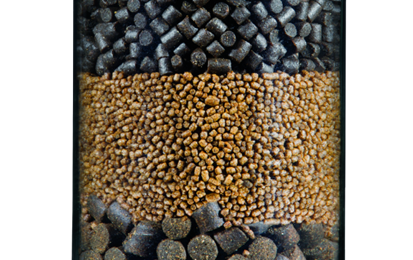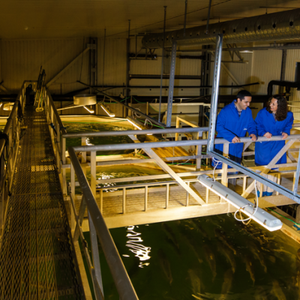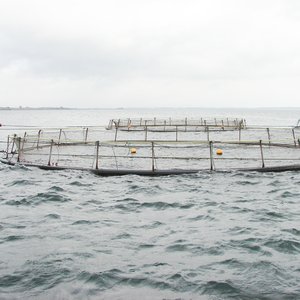The features of the pellet are extremely important when it comes to feeding management because this is the vehicle for nutrients’ intake. For the pellet to be successfully ingested, it is necessary to consider the physiology of the fish.
Fish mouth size will determine the proper size of the pellet since feed particles must be sufficiently small to be ingested while being large enough to be consumed without expending too much energy in the process. An inadequate pellet size may cause nutritional imbalances and promote fish size dispersion in the cage or pond. For instance, when the pellet is smaller than supposed, fish will have to ingest more pellets per day to fulfill their nutritional needs and the fish farmer will be obliged to spend more time in the feeding process. As such, the risk of feed losses due to ineffective feeding will increase and this may be translated in higher production costs.
The feeding behavior of each species is also crucial because it will determine the density of the feed. Depending on fish eating on the surface or the bottom, pellets can either float (e.g. carp or tilapia) or sink (e.g. sturgeon). Here, the floating feeds (when possible) have the great advantage of a more precise feeding control, as this allows easier detection of when fish are satiated and feed losses are avoided, ultimately leading to better water quality and more accurate feeding rates.
One of the main strategic drivers of Aquasoja is innovation. The company has established several R&D partnerships over time that let the company develop feeds from fry to grow-out for species such as seabass, sea bream, rainbow trout, tilapia, carps and sturgeon, among others.
“Technologically speaking, extruded pellets are preferred when it comes to fish nutrition because the extrusion process improves starch digestibility, enhances the utilization of vegetable sources (while inactivating possible anti-nutritional factors) and destroys potential pathogens. This technological process also allows for the manipulation of pellet density, which is impossible to perform in pellet press produced feeds. This greatly influences the quality of the feed, the feeding protocols and makes it possible to achieve better zootechnical performance. Our pellets are extruded and produced to meet the required species-specific demands, both nutritional and technological,” the company said.













